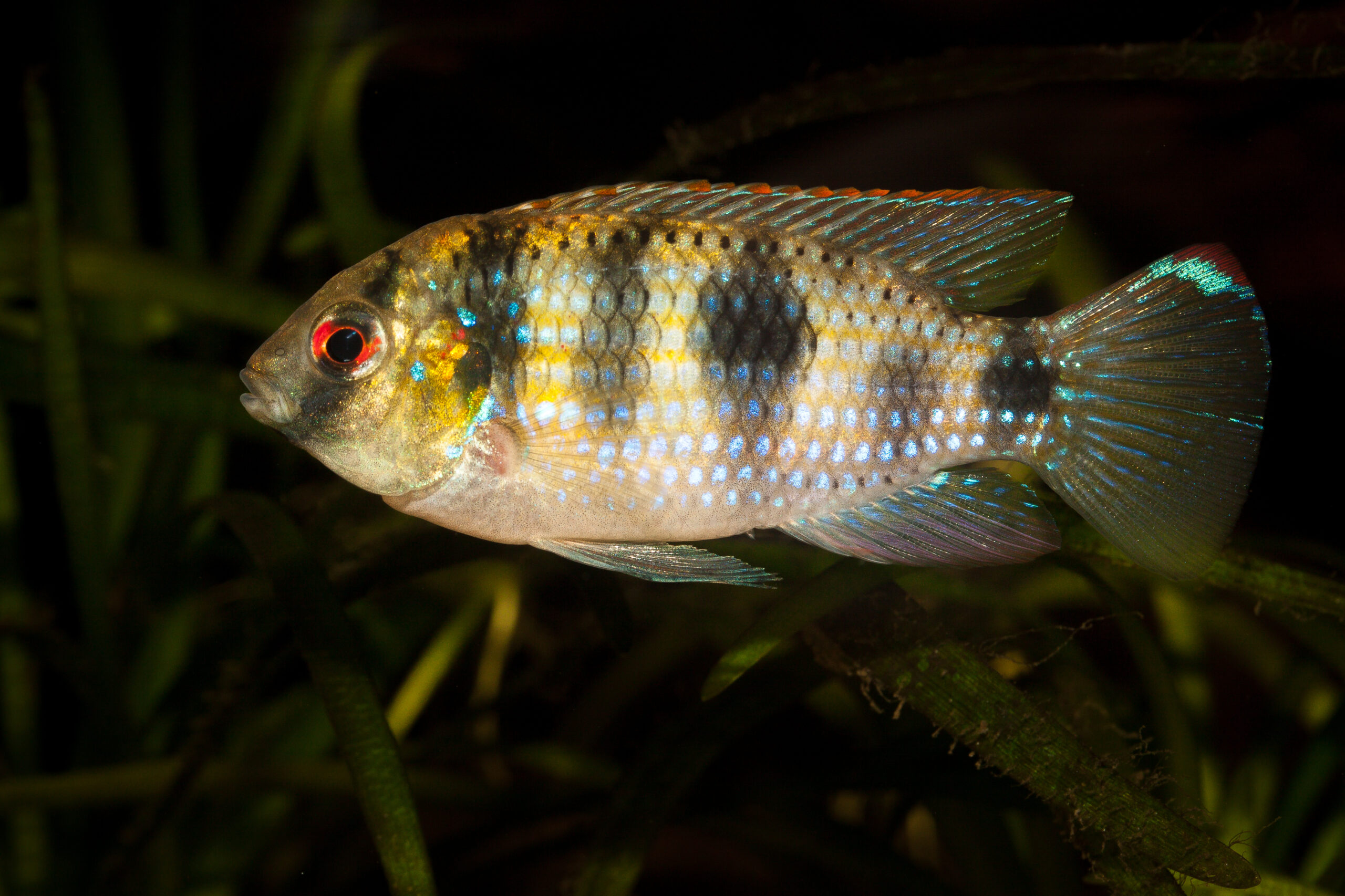African butterfly cichlid (Anomalochromis thomasi)
African butterfly cichlid (Anomalochromis thomasi) is native to Africa, but it’s not another species from Lake Malawi or Lake Tanganyika. If you are a fan of small cichlid species, you may really like this relatively unpopular fish. Do not be put off by the inconspicuous appearance of young fish in a store aquarium. If you provide them with the right conditions they will quickly grow to show their amazing potential.
Systematics
African butterfly cichlid is the only species in the genus Anomalochromis. The genera Anomalochromis and Hemichromis are grouped together in the tribe Hemichrominii, indicating an existing affinity between African butterfly cichlids and Hemichromis.
Where do African butterfly cichlids live?
In the wild, African butterfly cichlid inhabits the forest streams of Africa across Guinea, Sierra Leone and Liberia. Their waters are soft, acidic and rich in tannins and humic acids. As you can see, black water is not a biotope typical only for South America, although it is this continent that aquarists most often associate it with.
The needs of African butterfly cichlids
In the aquarium, African butterfly cichlids tolerate a fairly wide range of physical and chemical water parameters. They will feel comfortable at a water temperature of 23-27°C. The water pH should be between 5.5 and 7.5, and the hardness must not exceed 15°n.
How to prepare the aquarium for African butterfly cichlids?
African butterfly cichlid (Anomalochromis thomasi) is a small cichlid that usually grows to about 6-7 cm. It is best to start with a group of several juveniles and select a pair. The matched pair can be kept in an aquarium of even about 80 liters. However, if you choose to have a group of these fish, the aquarium should be much larger, giving the weaker fish the opportunity to designate territories and hide. The fish, though small, are feisty. Even a pair can fight at times.
For the bottom of aquarium use fine gravel. Be sure to provide decorations in the form of roots, coconut shells or ceramic caves that the fish can use as spawning areas and shelters. In addition, wood, oak leaves, ketapang, etc. will be an excellent source of tannins and humic acids. You can stay with this stark decor or you can also introduce plants. African butterfly cichlids don’t dig in the substrate, so they won’t damage it.
What are the best companions for African butterfly cichlids?
If you plan a larger stock of other fish, avoid aggressive, impetuous species that will dominate African butterfly cichlids. A good choice would be small Characiformes, Corydoras or other African or South American cichlids. You can either go with a single-species aquarium or limit it to African species. However, you can also combine fish from different continents in one aquarium. Just remember to choose ones with similar requirements for physical and chemical water parameters.
Sexual dimorphism in African butterfly cichlids
Sexual dimorphism is best marked in adult fish. Males are noticeably larger and bulkier compared to slender females. They also develop fatty humps on their foreheads and their odd fins are pointed. What’s interesting and rarely observed in fish, females are more intensely colored than males. Also, just before spawning, they have visibly rounded bellies.
What do African butterfly cichlids eat?
The diet of African Butterfly Cichlids in the wild consists mainly of small invertebrates and detritus. In the aquarium. you can feed them with foods rich in crustaceans and molluscs such as Africa Canivore S, Krill Flake, Cichlid Color, and enrich their diet with plant foods such as Africa Herbivore S or Super Spirulina Mini Granulat.










